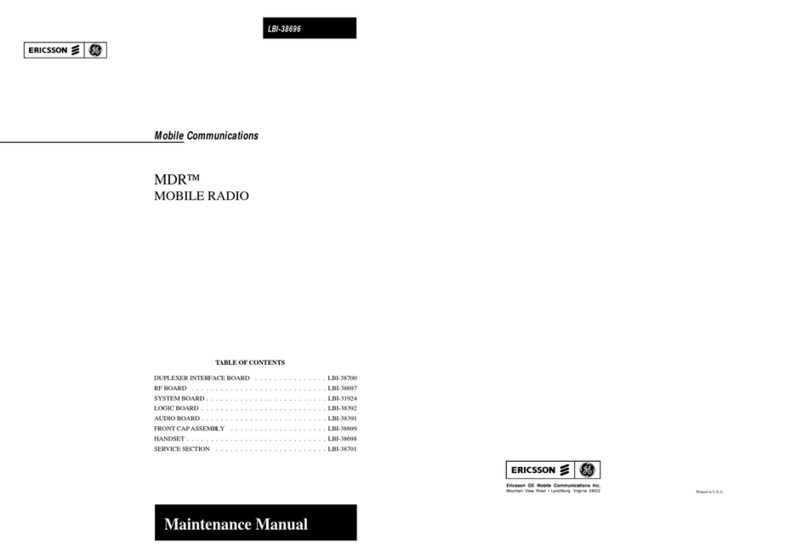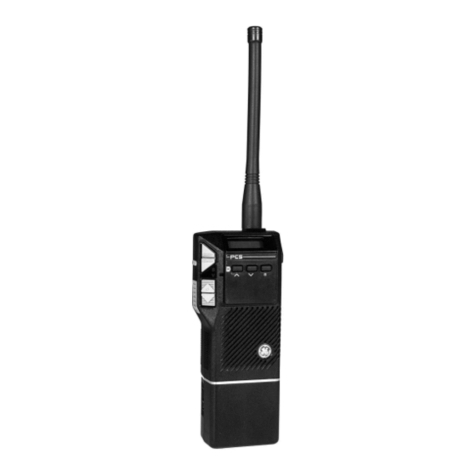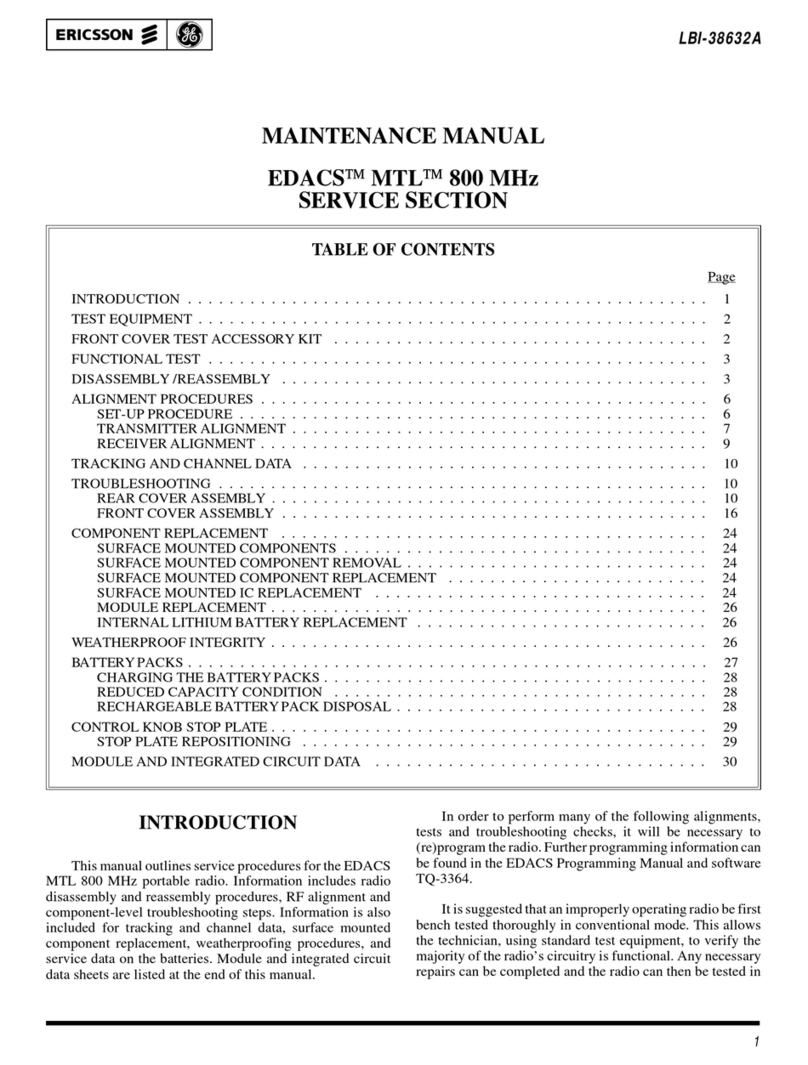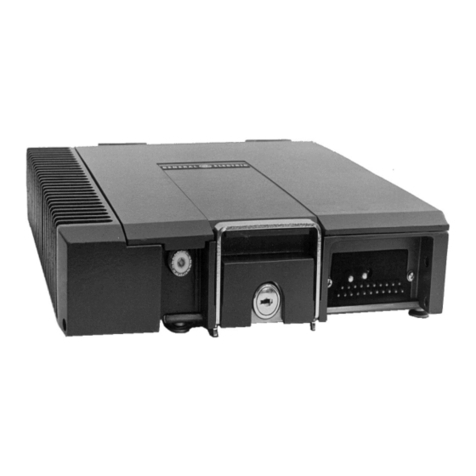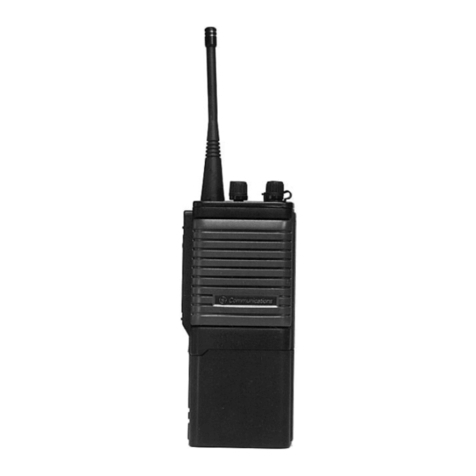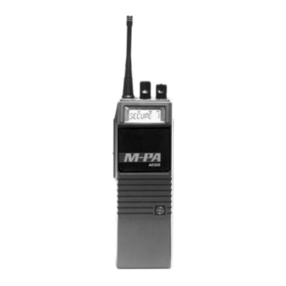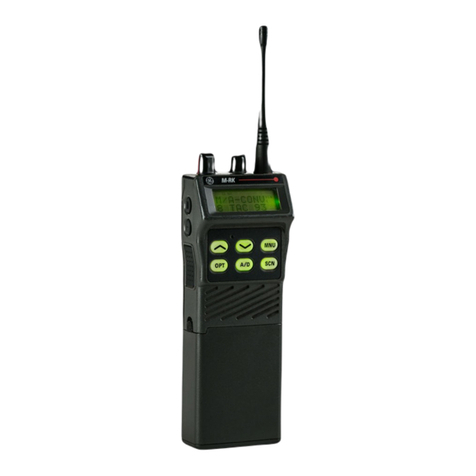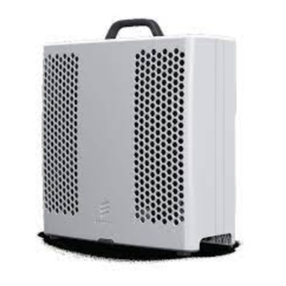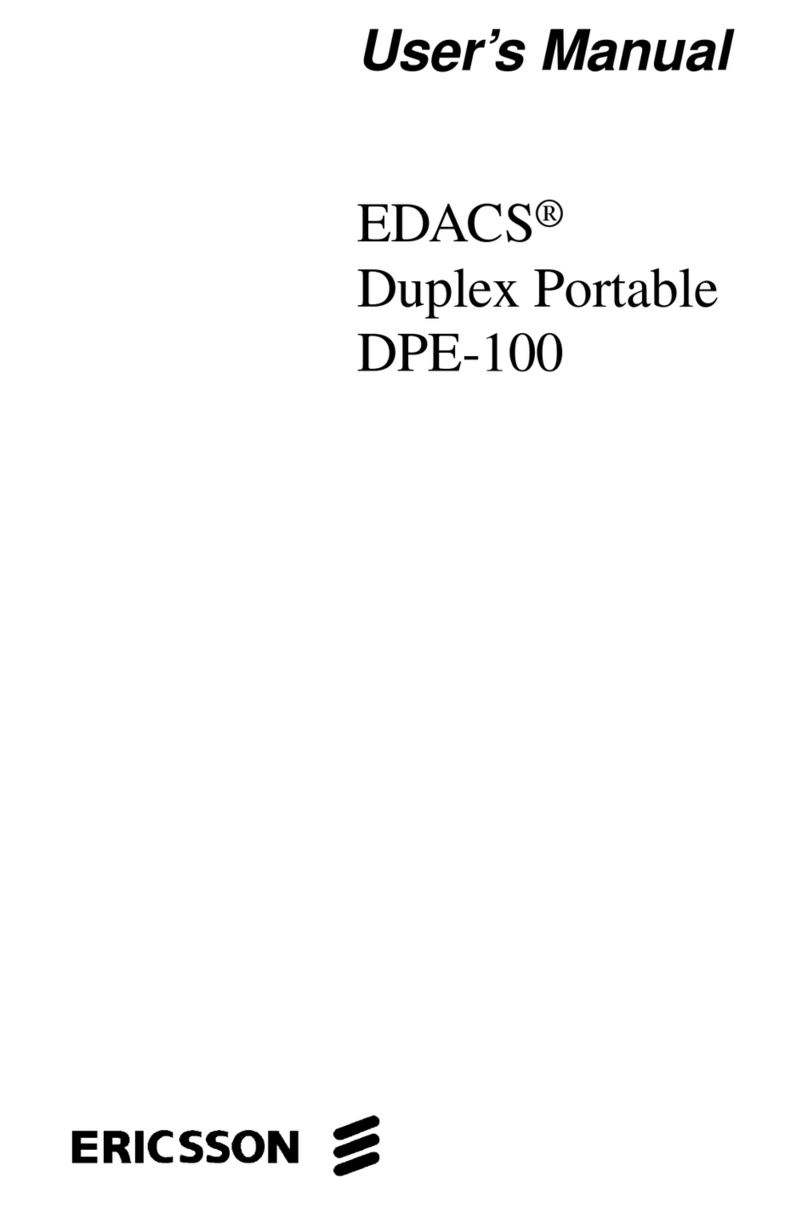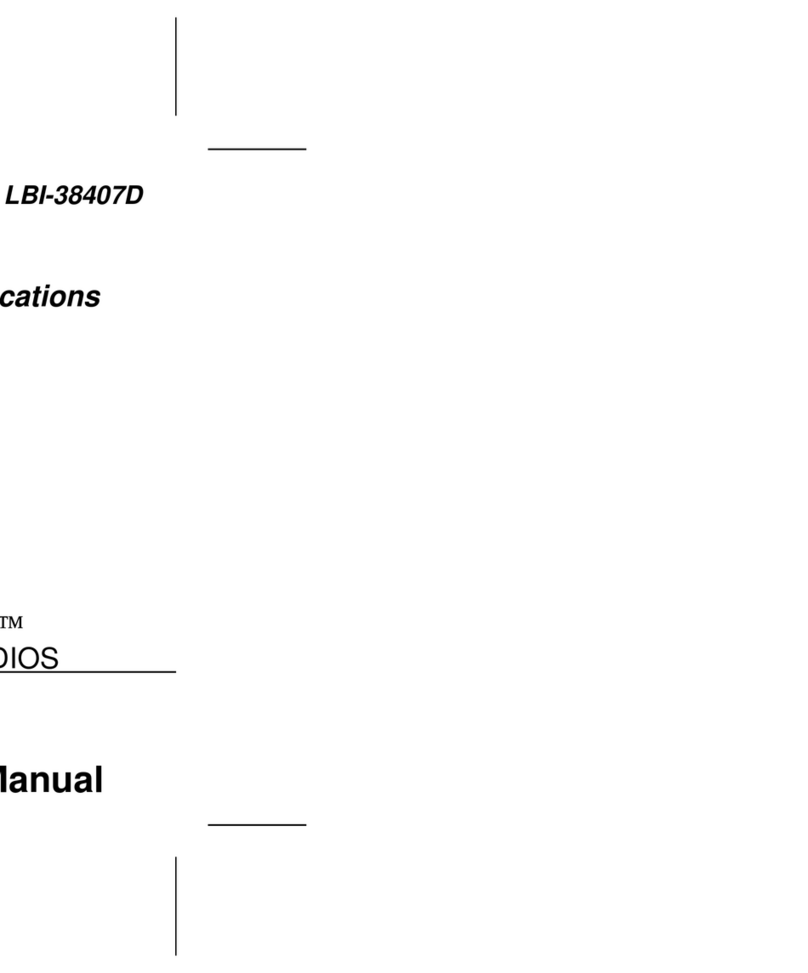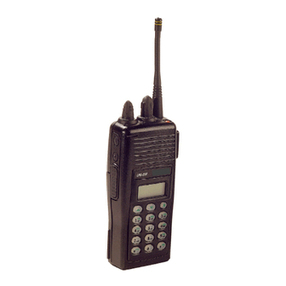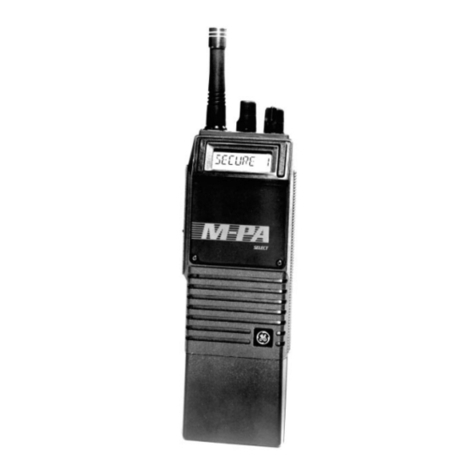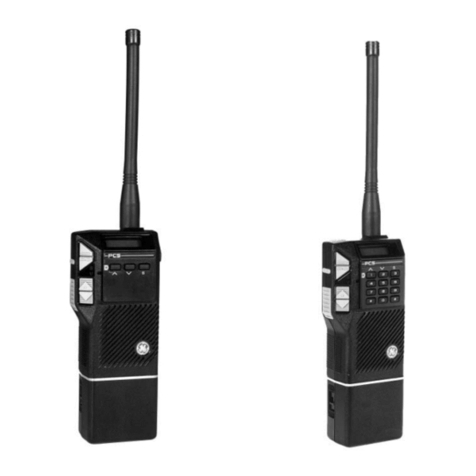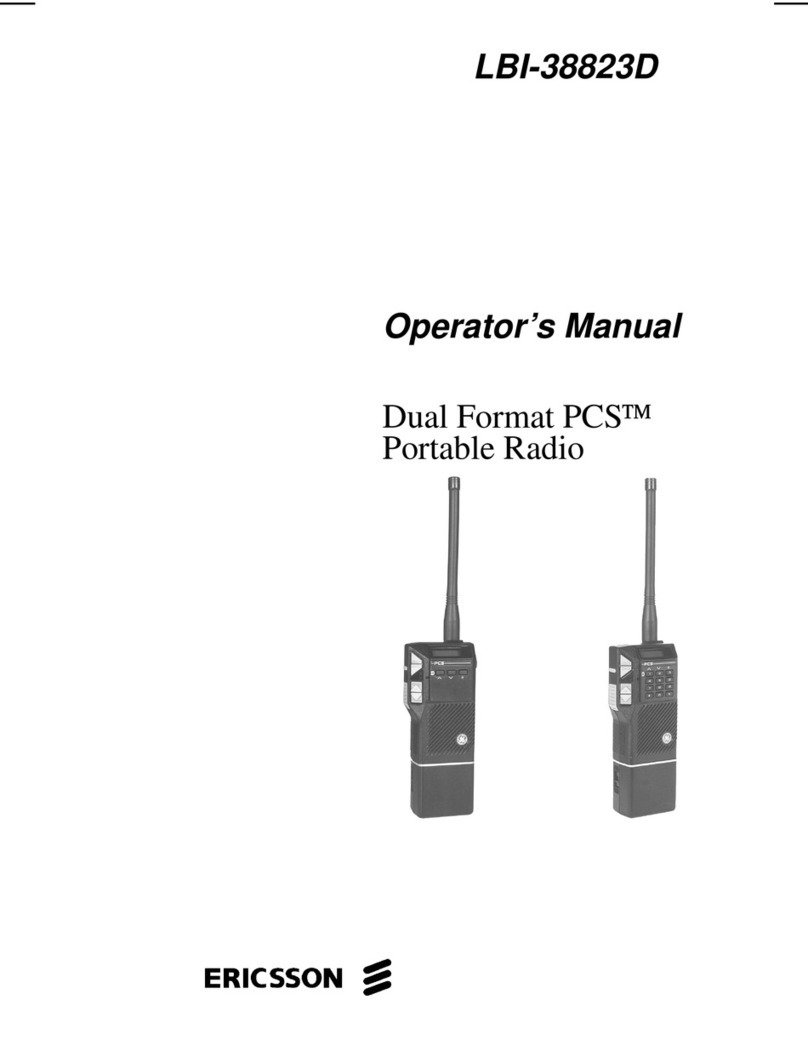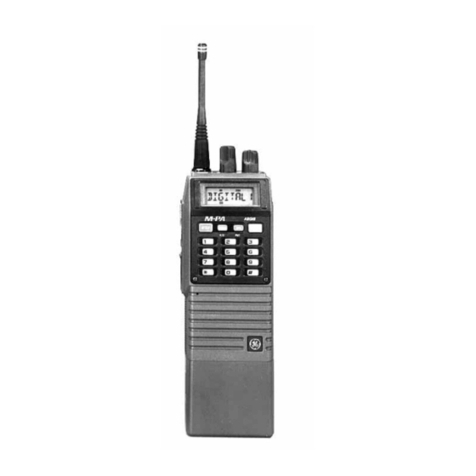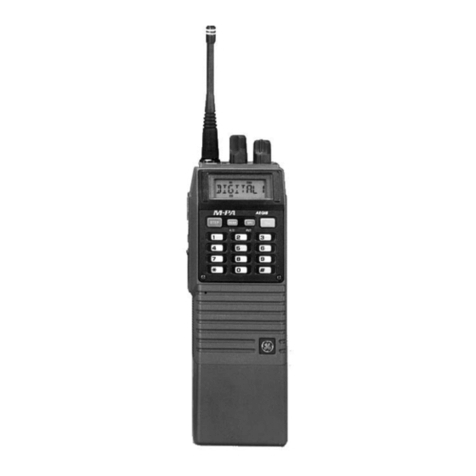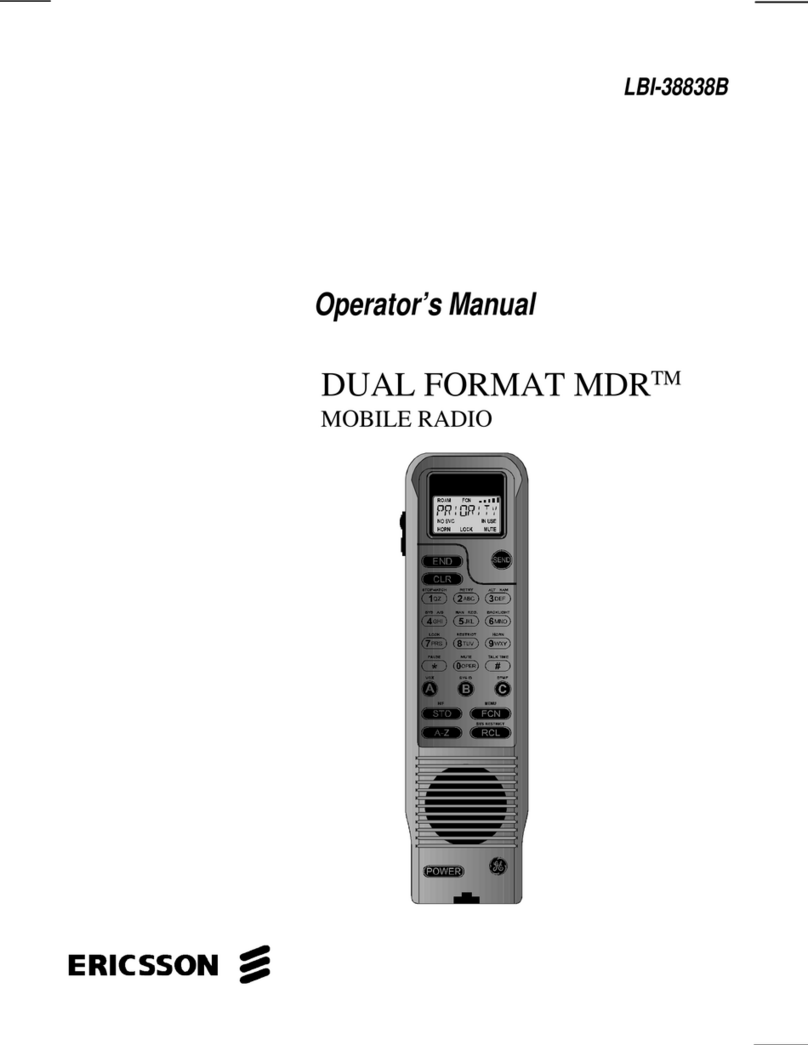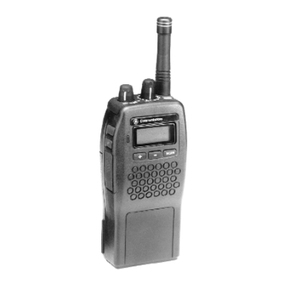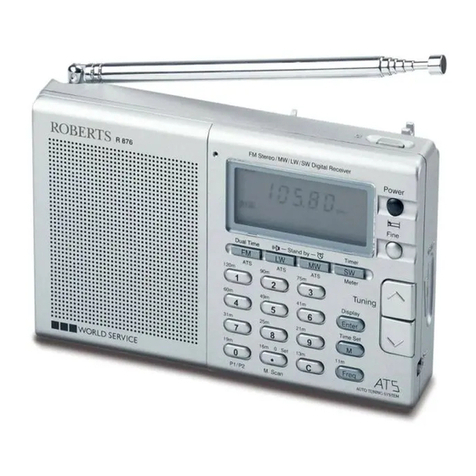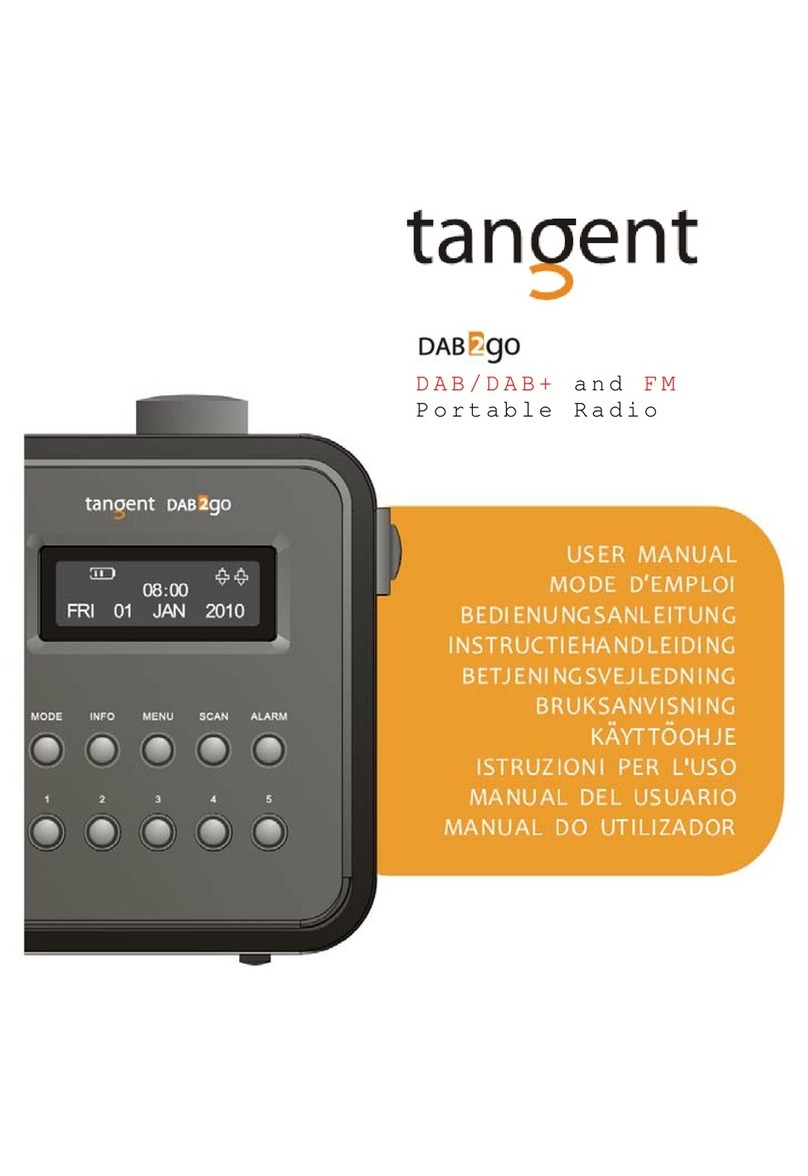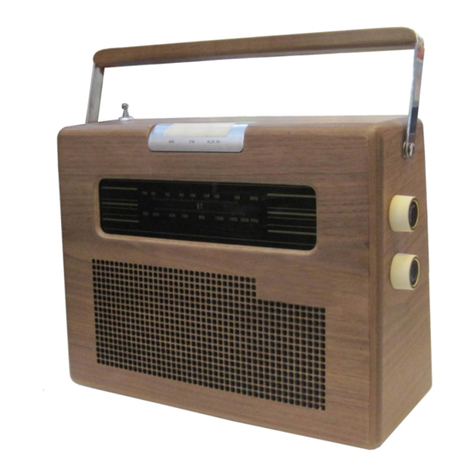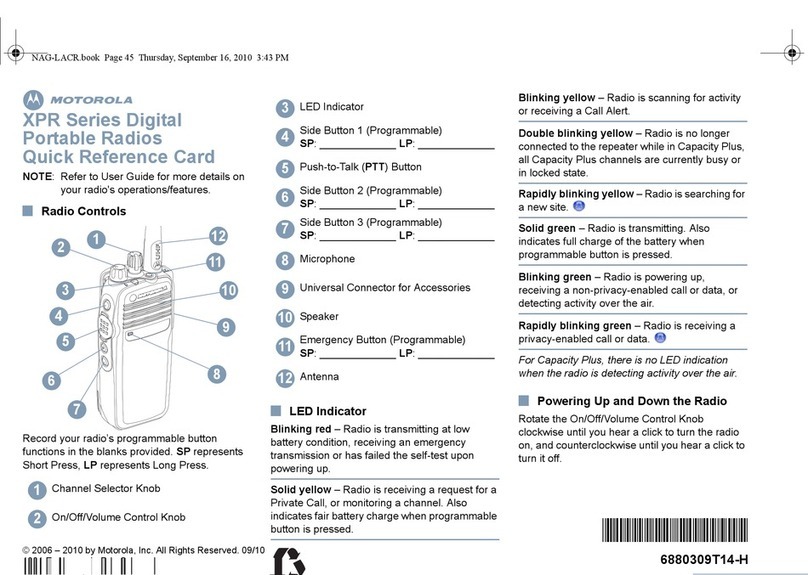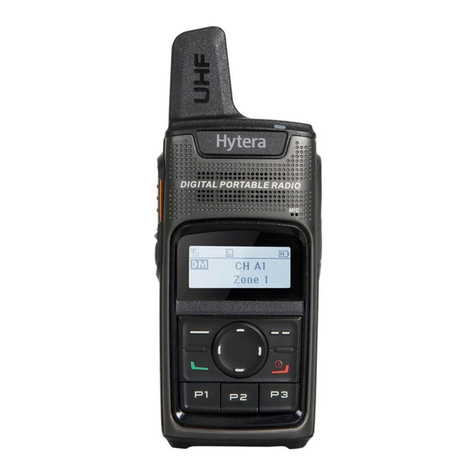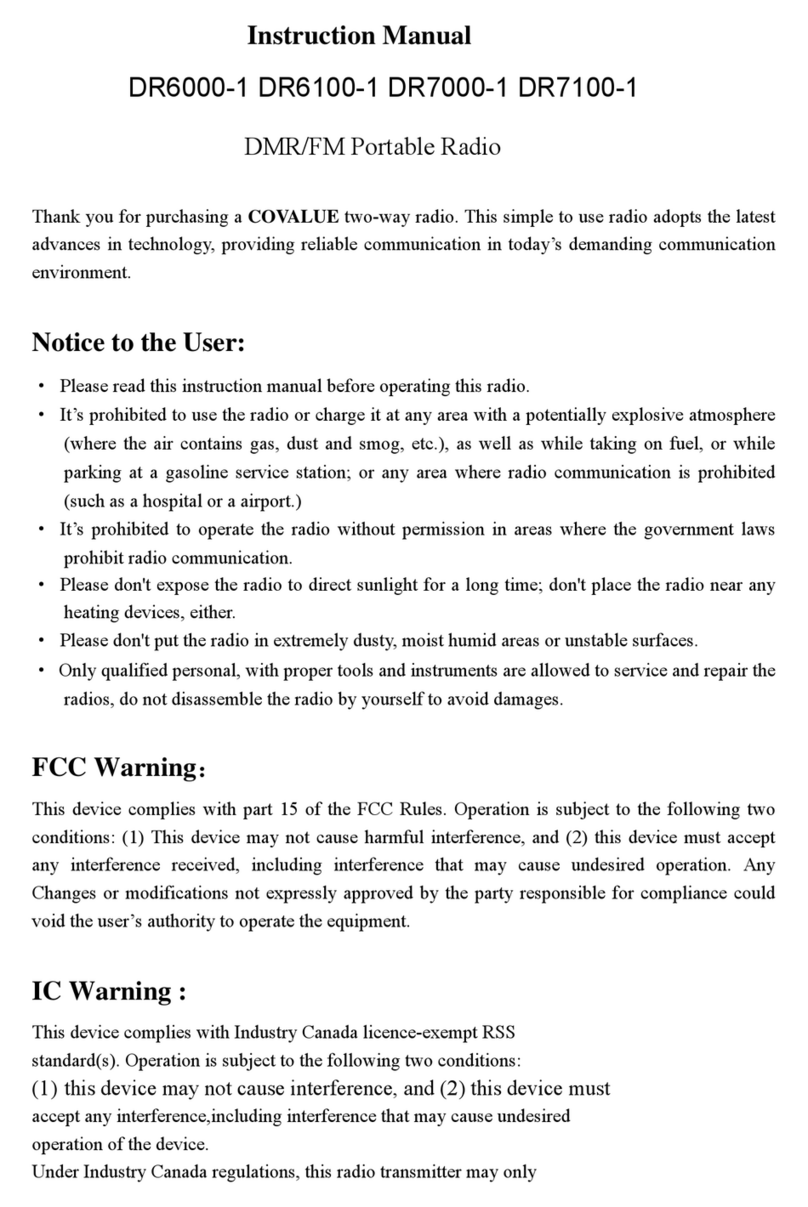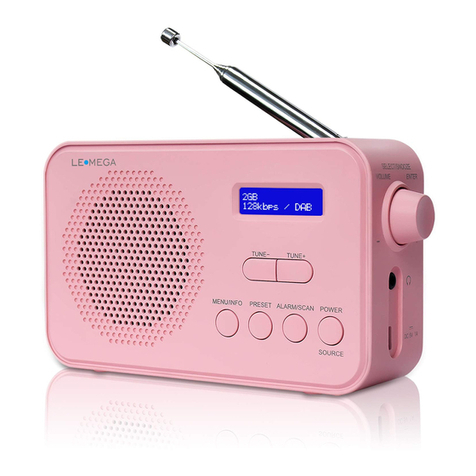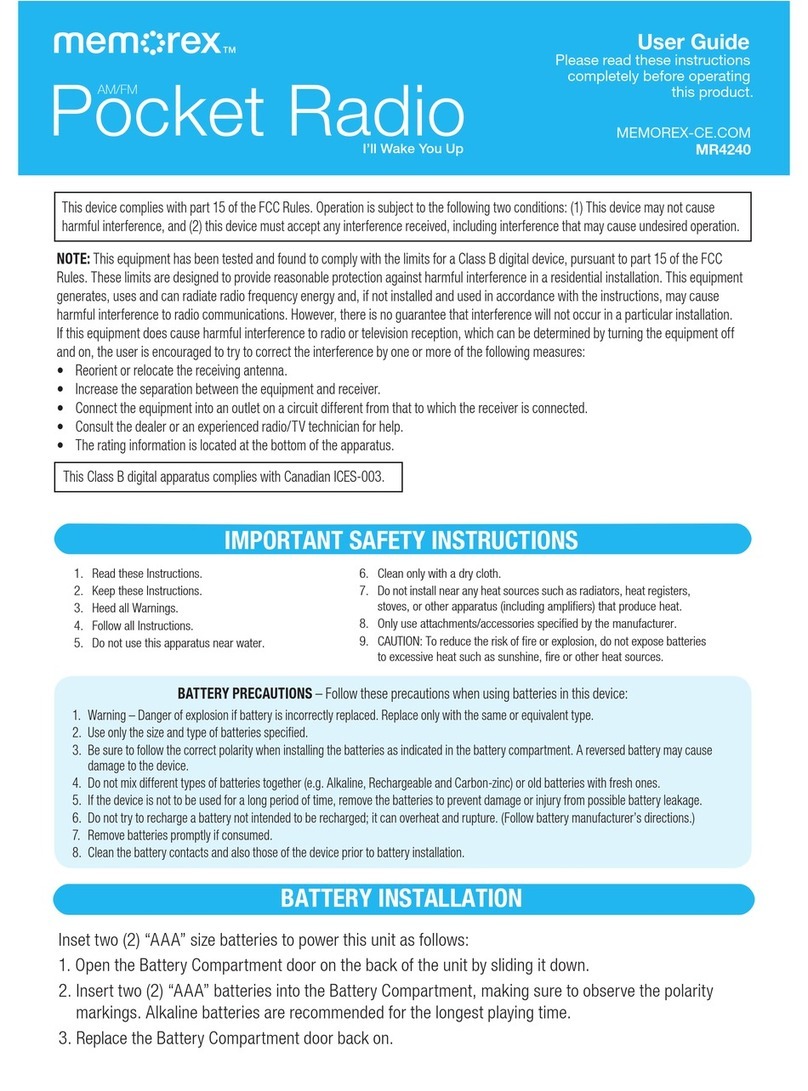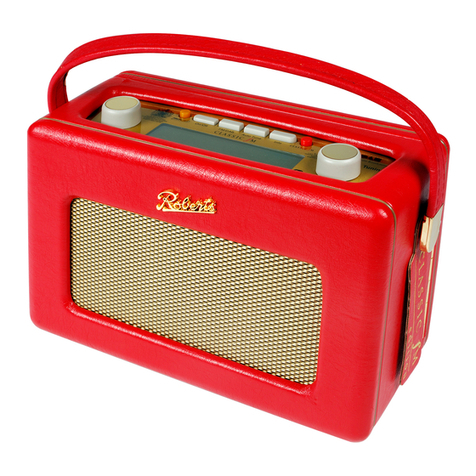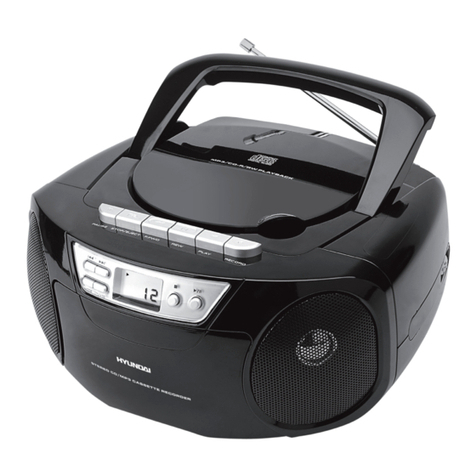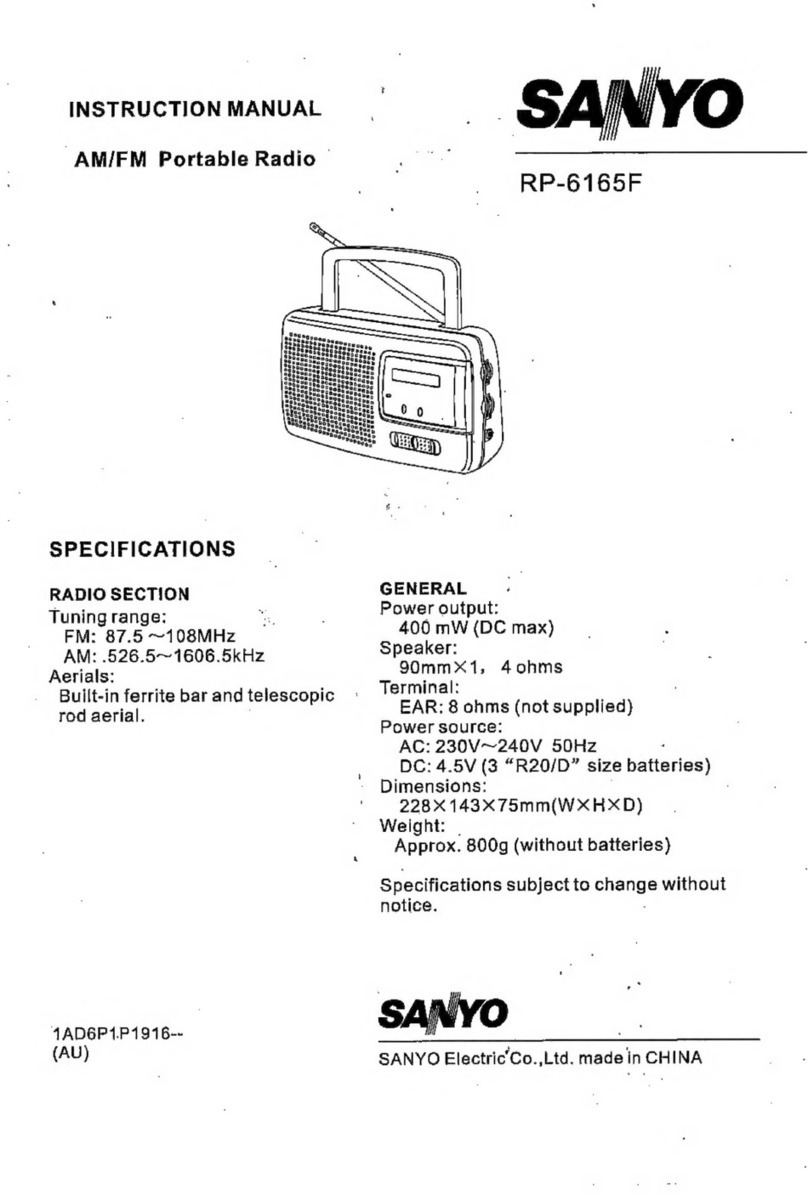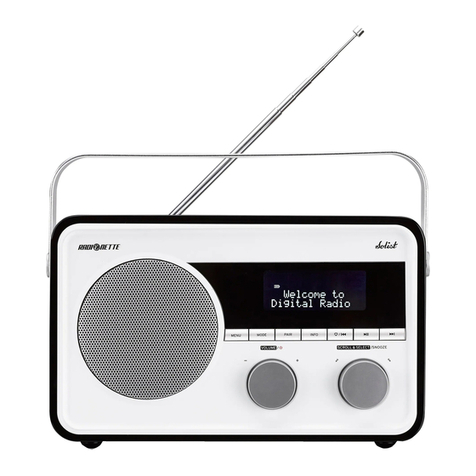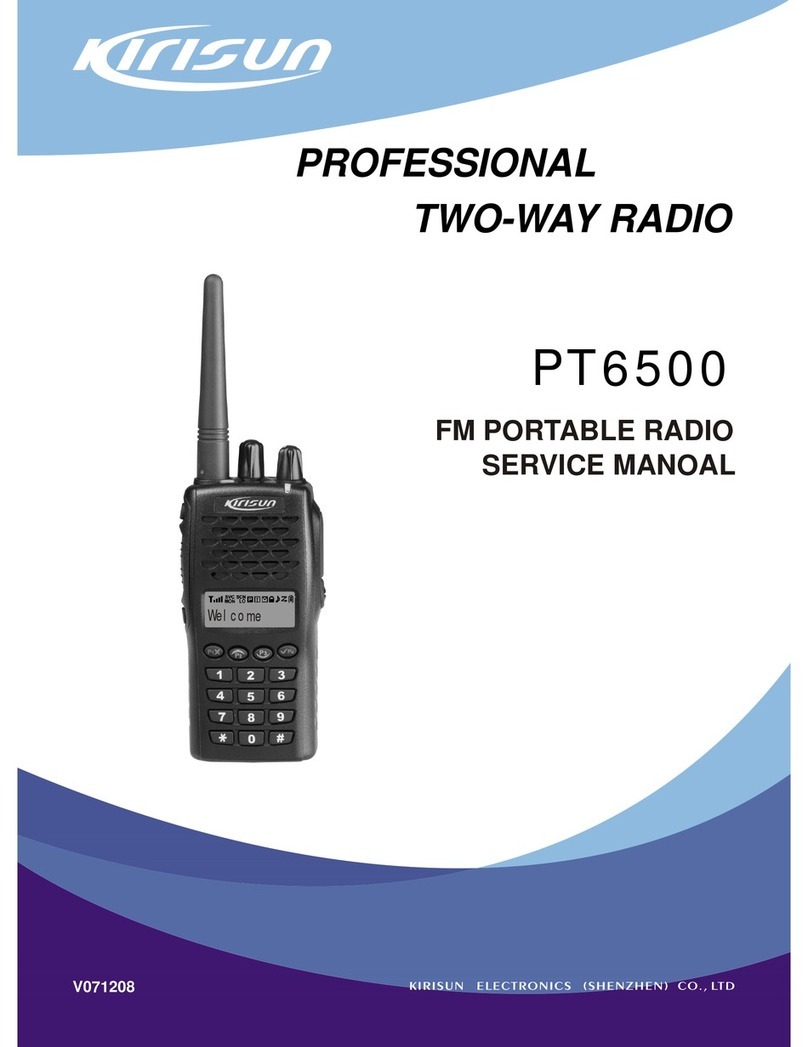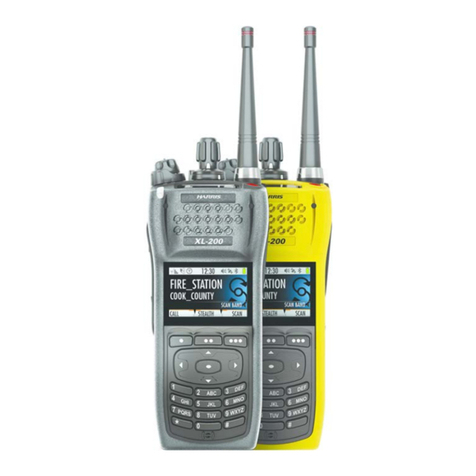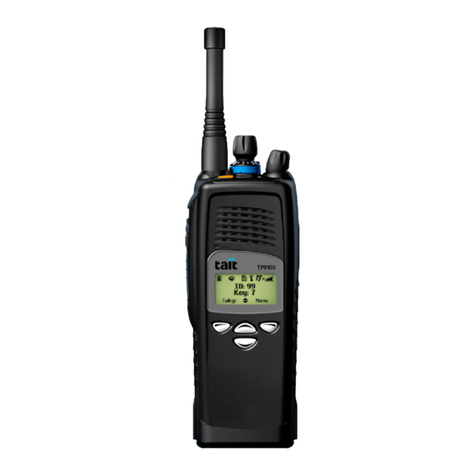
AE/LZB119 1647 R1A
20
PLL IC (U105) AND LOOP FILTER
The frequency synthesizer consists of a single loop
phase locking circuit with a reference frequency of 12.5
kHz. The phase-locked loop operates as follows. The
MC145190 has on-board 64/65 prescalers that divide the
VCO frequency to a useable value. In addition the ‘190 has
3 counter registers that are controlled by the microprocessor
via U105 pins 17-20. These registers are the R,N, and A
registers. To obtain the 12.5 kHz reference frequency, 1024
must be loaded from the microprocessor to the R-register.
This is the TCXO frequency (12.8 MHz) divided by the
reference frequency (12.5 kHz).
The frequency correction signal is determined by the
PLL IC in the following manner. The divide ratio of the
prescaler is initially 65 and the A and N registers are set to a
start value. The Synthesizer chip will count the cycles given
by the prescaler by decrementing the value in the A and N
registers by one for each cycle. When the A register equals
zero, the prescalers divide ratio changes to 64. The
MC145190 will continue to count until the N register is
zero, then the A and N registers are reloaded with their
starting values. This process is then repeated. The total
divide ratio of the prescaler and the A and N registers can be
expressed by K={128 (N-A)}+129A. This can be simplified
to K=128N + A. After the VCO frequency is divided by the
total divide ratio (K), it is compared with the reference
frequency and a phase error signal is generated. To
determine the VCO frequency, multiply the reference by the
divide ratio. FVCO= FREF x K.
The phase error signal, output at U106 pin 6 (PDOUT),
is converted from PDOUT current to a correction voltage by
the loop filter. This filter has a low-pass response with a
cutoff frequency of approximately 194 Hz. The filter
consists of C128, C154, C155, C156, and R128, R157. The
first section of the loop filter (C155, C156, and R157)
determine the transient response of the filter, convert
PDOUT current into a corretion voltage, and have a large
impact on reference sideband levels. The saturation
capacitor (C154) is responsible for keeping transient
voltages on PDOUT within linear operating range of the
charge pump and for additional sideband suppression. The
final section (R128 and C128) is used for extra sideband
filtering without affecting the transient response of the filter.
Lock Detector
When the synthesizer is locked, the output at U106 pin
2 is essentially at a high level with narrow low-going pulses.
This signal is filtered by C158, C159, and R158.
When the synthesizer is unlocked, the output at U105
pin 2 is essentially at a low level. When the PLL Synthesizer
is in the unlock state, the microprocessor performs an unlock
recover routine. If the recovery fails, all operations of the
radio stop and “SYNLOC” is shown on the LCD.
Power Switching and Voltage Regulator
U109 and U110 provide a regulated +5Vdc to the RF
Board. U110 provides power to the receiver section of the
board. U109 supplies power to the rest of the board
including the synthesizer chip, the VCO module, and the
TCXO module. The use of two regulators provides
protection from interference between the receiver and the
other circuitry.
DIGITAL BOARD
THEORY OF OPERATION
650-010-0003
Digital Board 650-010-0003 contains microprocessor
circuitry used to control the radio's RF circuits and display
board circuits. In addition this board provides dual mode
trunking control and performs transmit-receive signal
processing. Physically the Digital Board mounts on the top
of the frame assembly. Connectors on the board
interconnect the RF board and the display board. The
Digital Board contains the following major components.
• 8- bit micro controller
• 128k x 8-bit operational software memory (flash
EEPROM)
• 4800/9600 baud modem
• serial number memory (ROM)
• audio signal processor, busy tone notch filter
• 8K x 8-bit CMOS static RAM
• 5-Volt regulator, and Audio Power Amplifier
CIRCUIT ANALYSIS
MICRO CONTROLLER U701
Micro controller U701 controls the operation of the
radio. This integrated Circuit is an Intel 83C51 8-bit micro
controller with extensive I/O (input/output) interface and
controlling capabilities. The micro controller performs the
following radio functions.
• EDACS trunking functions




















